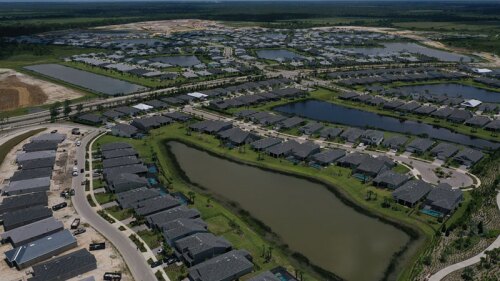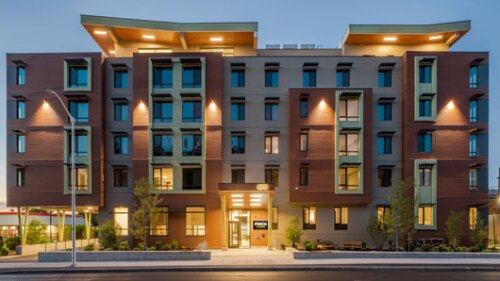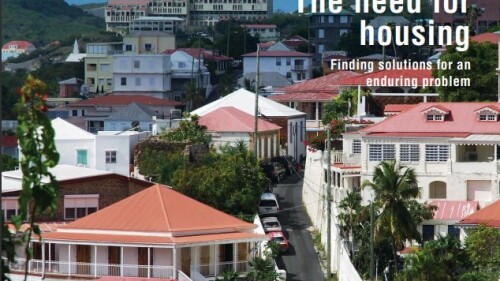A new ULI report investigates how the real estate community is working to address the homelessness crisis in the United States. The report explores how to support people experiencing homelessness through creative housing solutions and collaboration with community organizations, with the ultimate goal of providing abundant, affordable, and high-quality housing for affected and at-risk populations.
According to the U.S. Department of Housing and Urban Development, 2020 marked the fourth-consecutive annual increase in people experiencing homelessness. Homelessness is a systemic challenge that necessitates the involvement and collaboration of the government, the private sector, philanthropic organizations, health and social services, faith communities, and the public.
The report, Homeless to Housed, offers housing case studies, universally applicable lessons, and a blueprint for how to replicate best practices in other communities to show how the development community can be an active partner in addressing homelessness.
“More than ever before, homelessness is being driven by rapidly increasing housing costs, and the public and private sectors must work together both to meet the needs of the unhoused and to prevent more households from falling into homelessness,” says Christopher Ptomey, executive director of the ULI Terwilliger Center for Housing. “This report offers creative models and examples of how the real estate community is effectively leveraging its housing development, management, investment, and financing expertise to enable cities to overcome the growing challenge of homelessness.”
Key takeaways from the new report include the following:
- Housing is important, but social services are essential: Housing is an essential first step in addressing homelessness, but it is not a solution in and of itself. Comprehensive social services are a critical second component. Delivering one without the other offers little chance of successfully tackling the crisis.
- Novel, creative solutions are needed: Nowhere is the need for innovation more evident than in seeking to address homelessness. Two areas of focus are cost-effective construction methods and nongovernmental funding sources. Private companies—both in real estate and in other sectors—have a vital role to play in the latter.
- All segments of the community must play a role: Homelessness affects real estate, health care, social services, education, economic development, and more. Community collaboration is essential, particularly among the private and public sectors. The real estate sector is obligated to provide cost-effective housing, and it is incumbent on governments to pursue bold policies that allow for more housing for people of all income levels.
- Homelessness is a multifaceted issue, but in many cases links back to economics: Whether because of a lack of affordable housing, low wages, unexpected expenses, loss of employment, illness, lack of insurance, or a domestic issue, homelessness can be a result of economic stress.
The report includes seven case studies that feature creative solutions for addressing homelessness that could serve as models for investors and developers alike:
- New Orleans: City of New Orleans Shelter and Engagement Center provides a 24-hour shelter to 100 homeless individuals and provides services to help guests secure permanent housing.
- Mountain View, Calif: LifeMoves is a supportive interim housing community that provides intensive case management services to help clients overcome homelessness and return to sustainable housing.
- Long Beach, California: Former Best Western Motel conversionwas the recipient of funds from Project Homekey, California’s innovative $600 million program to purchase and rehabilitate housing. The former motels now provide temporary housing for residents 65 and older with pre-existing conditions that put them at greater risk of contracting COVID-19.
- San Antonio: Haven For Hope is the largest mixed-use development in the United States that provides housing for people experiencing homelessness, as well as job training, education, medical care, identification recovery, case management, and animal care services.
- Sharon Crossing, North Carolina: The Lotus Campaign is a non-profit organization that increases the availability of housing for people experiencing homelessness by engaging with the private, for-profit real estate and investment communities. Recognizing that neither the public nor private sector can solve homelessness alone, the Lotus Campaign strives to bridge that gap while minimizing risks for vulnerable renters.
- San Francisco: The Bryant Street Project provides 145 apartments of permanent supportive housing near public transit, grocery stores, and community parks to ensure that residents have access to neighborhood amenities and services.
- Washington, D.C.: John and Jill Kerr Conway Residence provides housing constructed with sustainable materials as well as health and social services to veterans experiencing homelessness in collaboration with the U.S Department of Veterans Affairs.
- Berkeley, California: The project at 2012 Berkeley Way is a redevelopment of a surface parking lot in downtown Berkeley that will create three distinct projects—an 89-unit affordable family housing development; a 53-unit permanent supportive housing development; and a homeless shelter plus transitional housing—in one unified building.
The full Homeless to Housed report is available on ULI’s Knowledge Finder platform.





